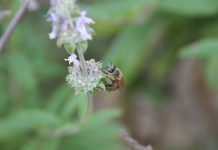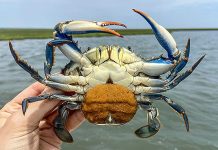
Researchers have conducted one of the first detailed studies of the social and foraging behaviors of Antarctic minke whales using innovative camera tags.
This groundbreaking study, published in Behavioral Ecology and Sociobiology, offers new insights into the lives of these elusive whales, which are known for their krill-based diet within the delicate Antarctic sea-ice environment.
Led by Dr. Jenny Allen from Griffith University, in collaboration with the University of California Santa Cruz (UCSC), the study collected data in 2018 and 2019 around the Western Antarctic Peninsula.
The research was funded by a grant from the National Science Foundation’s Office of Polar Programs to Dr. Ari Friedlaender, a professor in UCSC’s Ocean Sciences Department.
The study is unique because it used motion-sensing, video, and audio-recording tags attached to the whales. These tags allowed researchers to analyze the whales’ diving, foraging, and social behaviors in detail.
Key findings from the study showed that Antarctic minke whales have a flexible social structure known as “fission–fusion.”
This means they frequently change companions, similar to other baleen whale species. In 60.6% of cases, the whales formed short-term associations, engaging in both foraging and non-foraging activities.
Larger whales were more likely to socialize, but this social interaction often led to a decrease in their feeding efforts, regardless of how deep they dived. The study recorded 12 instances where tagged whales associated with each other in pairs or small groups.
These groups exhibited synchronized movements and diving behaviors, indicating that Antarctic minke whales use group foraging strategies. Specifically, 67.5% of associated dives and 64% of associated feeding lunges were done in unison.
“These findings provide essential baseline information on the sociality and group foraging behaviors of Antarctic minke whales,” said Dr. Allen. “Understanding these patterns is crucial, especially as climate change continues to impact the Antarctic ecosystem.”
The study highlights the importance of Antarctic minke whales as top predators of krill, emphasizing their role within the ecosystem. The synchronized foraging behavior suggests that these whales might improve their feeding efficiency through cooperation, a behavior that was previously underestimated in this species.
“This study is fascinating because it provides new information on complex and dynamic social and behavioral patterns by an animal that until now we had very little information about,” said Dr. Friedlaender, the senior investigator on the project.
This research not only enhances our understanding of Antarctic minke whale social and foraging ecology but also highlights the need for future studies to further investigate these behaviors. The use of camera tags has opened up new possibilities for studying these elusive whales in their natural habitat.
Source: Griffith University.



